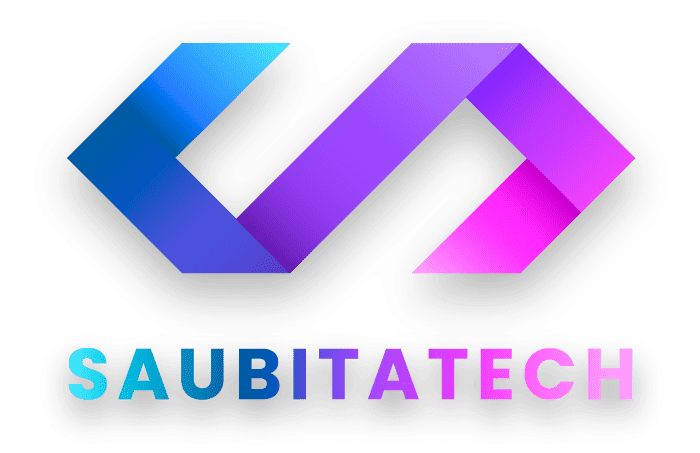In today’s fast-paced digital world, the recruitment industry has undergone significant transformation. Recruitment Process Outsourcing (RPO) providers play a key role in helping businesses streamline their hiring processes. One of the most vital aspects of the recruitment journey is the candidate experience, which directly impacts an organization’s employer brand and its ability to attract top talent. Technology has become the cornerstone for enhancing this experience, allowing RPO providers to create smoother, more engaging, and personalized journeys for candidates. This blog delves into the ways in which RPO providers leverage technology to enhance candidate experience, providing both companies and candidates with a competitive edge.
Understanding Recruitment Process Outsourcing (RPO)
Recruitment Process Outsourcing (RPO) involves outsourcing some or all of a company’s recruitment functions to an external service provider. RPO providers are responsible for managing the recruitment process, from job postings and sourcing candidates to interviews and final selection. By utilizing an RPO model, businesses can gain access to specialized expertise, reduce hiring time, and lower recruitment costs, all while maintaining a high level of candidate engagement.
RPO providers use a mix of technology, tools, and strategies to improve the efficiency of the recruitment process. With the right technological infrastructure in place, RPO providers can offer a seamless candidate experience that not only attracts top talent but also keeps them engaged throughout the hiring journey.
The Role of Technology in Candidate Experience
The recruitment process used to be paper-heavy, time-consuming, and often impersonal. However, with the integration of modern technology, RPO providers can now engage candidates more effectively, offering them an experience that is efficient, personalized, and memorable. Below are some of the key ways technology is being used to enhance the candidate experience in RPO services.
1. Applicant Tracking Systems (ATS)
An Applicant Tracking System (ATS) is a key technology used by RPO providers to streamline the recruitment process. ATS helps to track candidates from the moment they apply until they are hired, providing recruiters with a single platform for managing candidate data, resumes, and communications.
For candidates, an ATS simplifies the application process by allowing them to submit their resumes and cover letters digitally. It eliminates the need for repetitive manual entry, making the application process quicker and less stressful. Furthermore, candidates can track the status of their application in real-time, which helps reduce anxiety and uncertainty.
An efficient ATS system also allows recruiters to provide feedback to candidates more promptly. For instance, if a candidate is not selected for a position, the ATS can trigger an automated email to notify them, allowing the candidate to stay informed throughout the process.
RPO providers who use advanced ATS technology, such as those provided by Zoho, can offer candidates a user-friendly and transparent application process, ultimately improving their experience.
For example, if you are seeking streamlined bookkeeping solutions for your organization, consider checking out Zoho Bookkeeping for efficient and simplified financial management.
Leveraging AI and Data Analytics in RPO for Smarter Hiring Decisions

2. Artificial Intelligence (AI) and Chatbots
Artificial Intelligence (AI) and chatbots are transforming candidate engagement. Many RPO providers use AI-powered tools to handle initial stages of the recruitment process, such as answering candidate inquiries, screening resumes, and conducting initial assessments. AI-driven chatbots provide a fast, interactive, and efficient way to engage with candidates at any time, ensuring that no candidate’s question or concern goes unanswered.
AI can also help in matching candidates with the right job roles based on their skills and experience. The technology allows RPO providers to recommend job openings that align with a candidate’s qualifications, thereby creating a more personalized experience. These automated systems can ensure that candidates are always kept in the loop, improving their overall experience.
For example, a chatbot can schedule interviews or send reminders, eliminating the need for candidates to follow up manually. This instant communication ensures candidates feel valued and reduces the chances of them getting frustrated by delays in response times.
3. Video Interviewing Platforms
Another significant technological advancement in recruitment is the use of video interviewing platforms. These platforms enable RPO providers to conduct interviews remotely, making the process more convenient for both candidates and recruiters. Video interviewing eliminates geographical barriers, allowing companies to source and interview talent from across the globe.
Video interviews are particularly useful for initial screening stages. They allow candidates to express themselves in ways that a resume or application cannot fully capture, helping recruiters make more informed decisions. With video interviews, candidates can participate in interviews without the need for travel, saving both time and money.
The use of technology-driven video interview tools also benefits candidates by providing a more comfortable and flexible experience. Many platforms allow candidates to schedule interviews at their convenience, and some even offer AI-driven insights to improve their interview performance.
4. Mobile-Optimized Applications
With the increasing reliance on smartphones, it is essential for RPO providers to offer mobile-optimized platforms for candidates. Many candidates prefer applying for jobs through their mobile devices due to the convenience and accessibility they provide. A mobile-friendly recruitment platform ensures that candidates can apply for jobs, track their application status, and communicate with recruiters from anywhere at any time.
Mobile-optimized applications allow candidates to engage with the hiring process without being tethered to a desktop computer. They can receive notifications, check updates, and submit documents with ease. This flexibility enhances the candidate experience and makes the process more inclusive, allowing those who may not have access to a computer to still participate in the recruitment process.
5. Personalized Candidate Portals
Personalized candidate portals are another technological tool that enhances the candidate experience. These portals allow candidates to create profiles, submit documents, and track their progress throughout the recruitment process. With a personalized portal, candidates can view job opportunities, submit applications, and receive updates on the status of their applications all in one place.
A well-designed candidate portal can also provide candidates with relevant resources, such as job preparation materials, interview tips, and feedback on their application. This level of personalization helps candidates feel more supported and engaged throughout the hiring process.
Moreover, RPO providers who utilize such portals ensure that candidates have access to a centralized system where they can keep track of all their applications in one place, making the process more organized and less overwhelming.
6. Data Analytics and Insights
RPO providers can leverage data analytics to improve the candidate experience by providing valuable insights into the hiring process. Through data-driven insights, RPO providers can identify trends, such as the most common reasons candidates drop out of the process or the stages where candidates experience the most friction.
By using analytics to measure the candidate experience, RPO providers can make data-backed decisions that enhance the recruitment process. For example, if data shows that candidates are not completing application forms due to complex formatting, RPO providers can streamline the process and reduce candidate frustration.
Additionally, data insights allow for the identification of best practices in recruitment, which can be shared with candidates to help them succeed in future interviews. RPO providers who use data analytics can create a more transparent and efficient experience for candidates, improving both their experience and the overall success of the recruitment process.
Seamless Recruitment: Integrating RPO with Your Internal HR Team
7. Seamless Onboarding Platforms
Once a candidate is hired, the onboarding process is the next step in the candidate journey. Technology can simplify and enhance the onboarding experience for candidates, ensuring a smooth transition into their new role. Onboarding platforms allow candidates to complete necessary paperwork, watch orientation videos, and gain insights into their new company before even stepping into the office.
A seamless onboarding process ensures that candidates feel prepared and valued, leading to higher retention rates and better overall job satisfaction. RPO providers can offer automated onboarding platforms that simplify the administrative side of the hiring process, allowing both candidates and companies to focus on building long-term, successful relationships.
For more on how RPO providers can use technology to improve the candidate experience, visit our Contact Us page for more information.
Conclusion
As the recruitment industry continues to evolve, technology remains at the forefront of improving candidate experience. RPO providers who embrace the latest tools and technologies are better equipped to engage with candidates, streamline the hiring process, and offer a more personalized and positive experience. By leveraging technologies such as ATS, AI, video interviewing, and mobile-optimized platforms, RPO providers can attract top talent and build lasting relationships with candidates.
If you’re looking for more insights or need assistance with your accounting services, be sure to check out our Accounting Services page. At Virtual Remote Bookkeeper, we understand the importance of seamless operations, and we’re here to help you take your business to the next level.For more blog updates, don’t forget to visit our Blog page!







